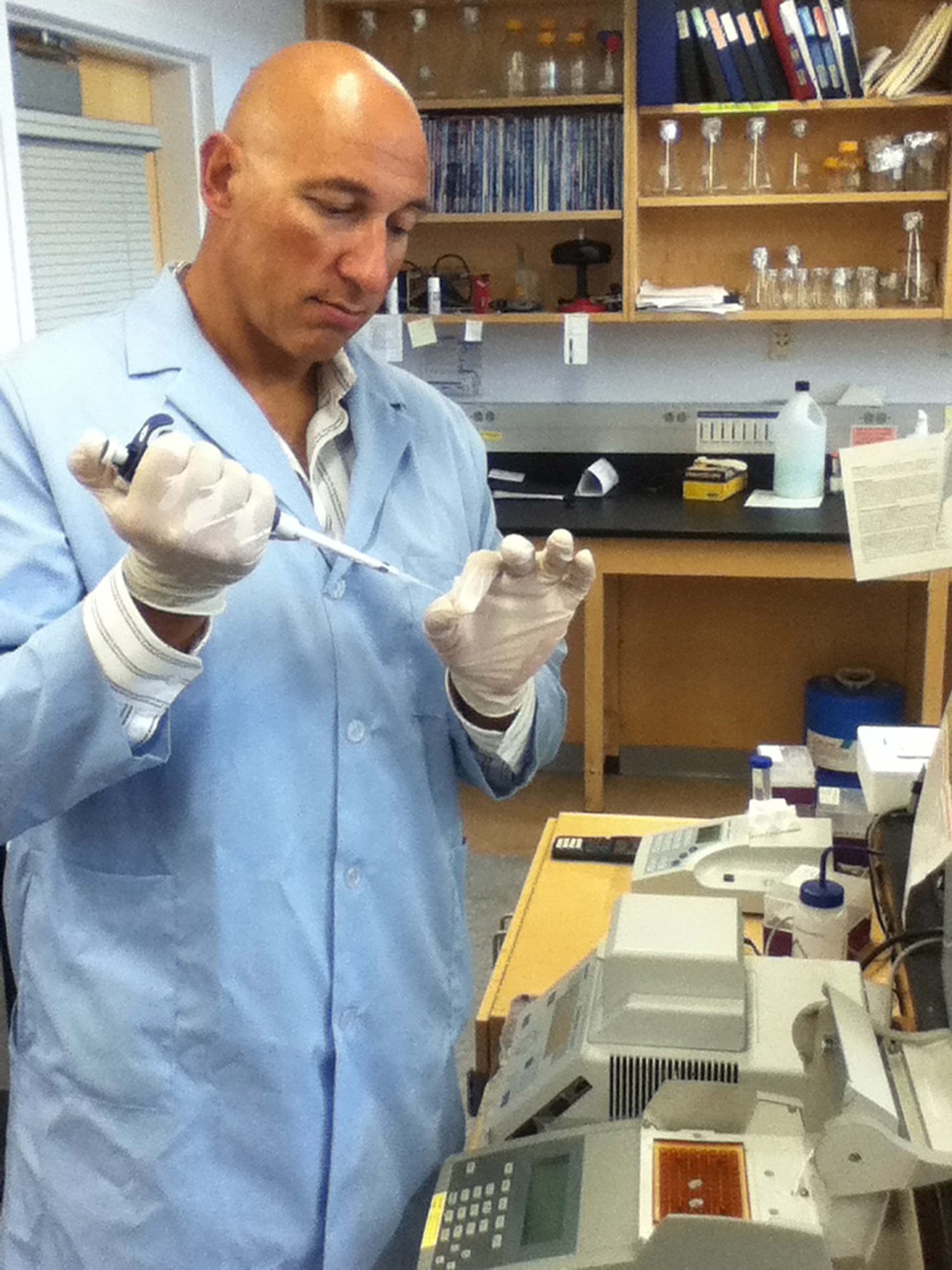'Loop'hole: HIV-1 Hijacks Human Immune Cells Using Circular RNAs

In a groundbreaking discovery, researchers from Florida Atlantic University’s Charles E. Schmidt College of Medicine have identified a never-before-seen mechanism that enables the human immunodeficiency type 1 virus (HIV-1) to evade the body’s natural defenses and use it to support its survival and replication.
The “loophole?” A biological process that involves circular RNAs (circRNAs), which form a “loop” or circle inside cells – unlike regular RNA molecules that are shaped like a straight line. This looped shape makes circRNAs much more stable and enables them to act like sponges – soaking up microRNAs (miRNAs) and preventing them from doing their usual jobs such as controlling which genes get turned on or off.
Although scientists have previously discovered thousands of circRNAs in human and animal cells, only a small number have been found in viruses – mainly in large DNA viruses like herpesviruses, including Herpes Simplex Virus and Epstein-Barr Virus. These viruses have big genomes and can stay hidden in the body for years before becoming active again.
Results of the study, published in the journal npj Viruses, marks the first experimental evidence of HIV-1 generating circRNAs produced from an integrated retroviral genome, offering a new perspective on HIV biology. These findings reveal a previously hidden layer of HIV-1’s life cycle, shedding light on how the virus enhances its persistence, replication and ability to evade the immune system. They also point to a novel strategy the virus uses to survive, offering researchers a new target in the fight against one of the world’s most resilient pathogens.
“We’ve known that circular RNAs show up in DNA viruses like Epstein-Barr and the human papillomavirus, but seeing that they are generated by an RNA virus like HIV-1 is incredibly exciting,” said Massimo Caputi, Ph.D., senior author and a professor in the Department of Biomedical Science, Schmidt College of Medicine. “HIV-1 is unique – it integrates into the host genome and hijacks the cell’s RNA-processing machinery, giving it a rare ability among RNA viruses to generate these stable circular RNAs.”
The team identified at least 15 distinct HIV-1 circRNAs and confirmed their presence using advanced molecular techniques and sequencing tools.
“When HIV infects the body, certain immune cells called CD4+ T cells respond by increasing levels of two microRNAs – miR-6727-3p and miR-4722-3p – that likely help fight the virus,” said Caputi. “But HIV seems to fight back by producing circRNAs that trap these microRNAs. This weakens the immune response and helps the virus make more copies of itself. This suggests that HIV’s circular RNAs might help keep infected cells alive and allow the virus to stay hidden in the body for a long time – one of the main reasons why HIV is so hard to cure.”
Normally, certain miRNAs are present at low levels, but they increase when a person is infected with HIV. To fight back, HIV makes circRNAs that soak up these miRNAs and weaken the body’s defense. This allows the virus to keep multiplying.
“One of the most common circRNAs made by HIV, called Circ23, includes parts of the virus’ genetic code that scientists didn’t fully understand before,” said Caputi. “But now, they seem important for helping the virus survive and replicate.”
The findings also suggest that circRNA production may vary between individuals, potentially influencing differences in viral persistence and spread. This variation could stem from how host cells process RNA and from the availability of RNA-binding proteins needed to form circRNAs.
“These differences may help explain why patient responses vary, especially in cases of viral latency – a state where the virus lies dormant and resists both immune attack and antiretroviral therapy,” said Caputi.
Although current techniques make it difficult to measure circRNAs accurately, the researchers note that the use of droplet digital PCR may soon allow precise quantification of these molecules in patient samples.
“This is just the beginning,” said Caputi. “We’re now working to map out how these viral circular RNAs interact with human cells. If we can figure out how to block them, we might be able to stop the virus from hiding and help move closer to a cure.”
The research team also plans to explore new treatments that use special molecules called antisense oligonucleotides (ASOs) to block HIV’s circRNAs. They’ll test this approach in models of long-term infection and in cells from people living with HIV to better understand how these circRNAs help the virus survive in the body.
“Our findings reveal how HIV takes control of human cells at a very detailed level and point to new possibilities for treatment,” said Caputi. “Because circular RNAs are stable and specific, they could also be used as markers of infection or as new targets for drugs.”
Study co-authors are Christopher Mauer and Sean Paz, graduate students in the FAU Department of Biomedical Science.
 Massimo Caputi, Ph.D., senior author and a professor in the Department of
Biomedical Science, Schmidt College of Medicine.
Massimo Caputi, Ph.D., senior author and a professor in the Department of
Biomedical Science, Schmidt College of Medicine.
-FAU-
Latest Research
- World's First Bench-to-Bedside MRI, Focused Ultrasound System UnveiledThe newly expanded FAU NeuroInnovate Center is the first in the world to integrate advanced MRI and focused ultrasound technologies into a single, unified platform for both preclinical and clinical research.
- Beyond the Pink Ribbon: Combating Breast Cancer in Younger WomenFAU researchers are investigating rising breast cancer in younger women. Four young survivors' stories highlight missed signs, emotional toll, and the urgent need for earlier detection and evidence-based care.
- Study: 'Man's Best Friend' Slows Cellular Aging in Female VeteransPioneering research from FAU and collaborators shows training service dogs slows biological aging in female veterans - especially those with combat experience - marking a breakthrough in mind-body health.
- Chatbots the New 'Doc?' Exploring AI in Health Behavior CoachingChanging habits is tough. AI tools like ChatGPT now simulate motivational interviewing (MI), showing promise - but can they match MI's core and spark lasting change? FAU researchers explore the potential.
- Study First to Show if Nesting Heat Affects Sea Turtle Hatchling 'IQ'FAU researchers are the first to train loggerhead sea turtle hatchlings in a maze using visual cues to test their learning and ability, and to determine if high nest temperatures impair their cognition.
- FAU Lands EPA Grant to Use Genetics in Florida Bay Sponge RestorationFunded by the U.S. EPA, the project marks the first genetic assessment of sponge recovery in the region, with broad implications for ecosystem health and economically important species like the spiny lobster.






